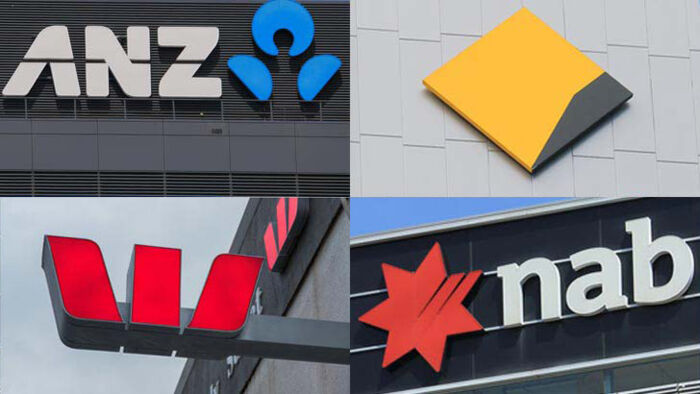Why bank shareholders are set to reap more in dividends
By Arian Neiron
Australia's big banks are upgrading their dividends payments, boosted by better-than-expected economic activity and solid earnings growth as money flows into their coffers on the back of the booming property market.
The big four - Commonwealth Bank, Westpac, ANZ and National Australia Bank - have long been loved for their fully franked dividend payments.
After a rough year in 2020, they recently boosted first-half dividends in the 2021 fiscal year. The improving earnings backdrop and strong growth in the number of mortgages banks are writing could see bank dividend payments rise again in the second half. The prospects for increased dividends are also underpinned by the fact that banks' balance sheets are overall in very good shape.
Recognising the banks' healthy capital positions, APRA in December relaxed its guidance on banks' capping shareholder payouts at 50% of profits, a sharp turnaround from its position in April 2020 when it had asked banks to "seriously consider" suspending dividend payments as COVID-19 hit and lockdowns were enforced.
As confidence has improved, bank shares too have rallied hard. Over the year to May 31, Commonwealth Bank shares have gained 21.7%, Westpac shares are up 36.4%, ANZ have gained 26.6% and National Australia Bank is up 19.0%. That compares to the S&P/ASX 200 which has gained just 8.7%.
Notably, Commonwealth Bank shares in May traded at $100 for the first time since it listed in 1991, almost doubling from their March 2020 lows of around $58. The momentum is firmly behind the bank as it is the nation's biggest home lender, with its shares closely linked to the huge property boom.
Home lending is sitting at record levels, given very low interest rates and government subsidies. Some experts have also predicted the bank could announce a share buyback this year, or a special dividend, so loaded up are its books with capital.
As the good times roll on, Westpac, NAB and ANZ also recently announced significant increases in dividend payments. National Australia Bank reported a 95% increase in first-half cash earnings to $3.34 billion and doubled its interim dividend to 60 cents, up from 30 cents a year earlier, though that is well down on the 83 cents paid in the first half of 2019.
Westpac and ANZ too increased first-half dividend payments to shareholders and announced big boosts in profit. Westpac in May reported a 189 per cent increase in first-half net profit to $3.4 billion. ANZ's cash earnings jumped to $3 billion in the first half, up $1.4 billion in the same period a year earlier.
Westpac boosted its dividends to 58 cents per share (a payout ratio of 60%) after not paying anything at all in the first half of 2020 due to APRA's request and only 31 cents in the second half of 2020. ANZ bank too boosted its dividends to 70 cents per share in the first half of 2021 up from 35 cents in the second half of 2020 and 25 cents in the first half.
Looking ahead, further increases in dividends are likely when full-year results are announced later this year, which is expected to lift the overall Australian share market given banks represent around 22% of the S&P/ASX 200.
The S&P/ASX 200 has recently set record highs above 7200, and could strike 7500 in coming weeks, and could even go to 8000. The ASX is far from its potential highs. Significantly, the Shiller Cyclically Adjusted Price to Earnings Ratio (CAPE) ratio, which is the market P/E ratio calculated using average (inflation-adjusted) earnings of the last 10 years, is far away from its all-time peak of 33.1 in October 2007, implying the market has a lot further to run. As at April 30, 2021, the P/E on the S&P/ASX 200 was 23.12, far below its peak and well below that in the US is at 38.25 as at April 30.
With rising bank prices rising so strongly, the Australian stock market is set for further gains. A portfolio exposure to each of the big four banks via an exchange traded fund (ETF) could be an ideal way for investors to achieve low cost and transparent exposure. The VanEck Vectors Australian Banks ETF (ASX code: MVB) gives targeted investment position to one of the pillars of Australia's economy and high franked income compared to other sectors.
Get stories like this in our newsletters.



